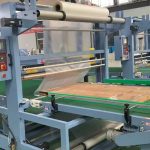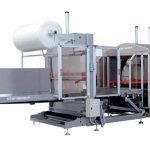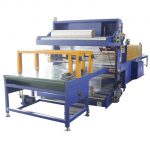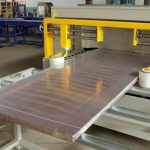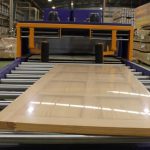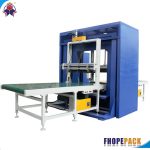5 Key Elements to Creating a Successful Door Packing Strategy
Introduction
Developing an effective door packing strategy is essential to ensure product safety during transport and storage, while also optimizing efficiency and reducing costs. Whether you’re packing doors for construction, residential, or commercial use, it’s crucial to focus on the right packing techniques to maintain product quality. Here are five key elements to create a successful door packing strategy that incorporates the use of door packing machines, shrinking solutions, and wrapping solutions.
1. Understand Your Packing Needs
Before establishing any packing strategy, it’s essential to fully understand the specific requirements of your doors. Different door types, such as wooden, metal, or composite, require distinct packing approaches to avoid damage during handling and transportation.
- Size and Weight: Heavier doors may need reinforced packaging or extra padding. Light doors, on the other hand, might benefit from tighter wrapping solutions to keep them stable during transit.
- Type of Material: Wooden doors may need protection from moisture, while metal doors require safeguarding against scratches and impacts.
By analyzing these factors, you can tailor your packaging process to the specific needs of your products, ensuring they remain intact from start to finish.

2. Choose the Right Materials
Selecting appropriate packaging materials is crucial to protect your doors from environmental elements and physical damage. There are several materials that work well in door packing strategies:
- Shrink Film: Utilizing a shrinking solution ensures a tight, protective seal around the door, guarding against dust, moisture, and minor abrasions. This material is ideal for outdoor storage or long-term warehousing.
- Wrapping Solutions: Stretch wrap is another option, offering flexibility and cushioning during transit. It allows for secure containment, especially when paired with a door packing machine to automate the process.
- Padding Materials: Consider adding foam or cardboard to protect corners or surfaces that are more prone to damage.
Using a combination of these materials will provide comprehensive protection, reducing the risk of damage and product returns.
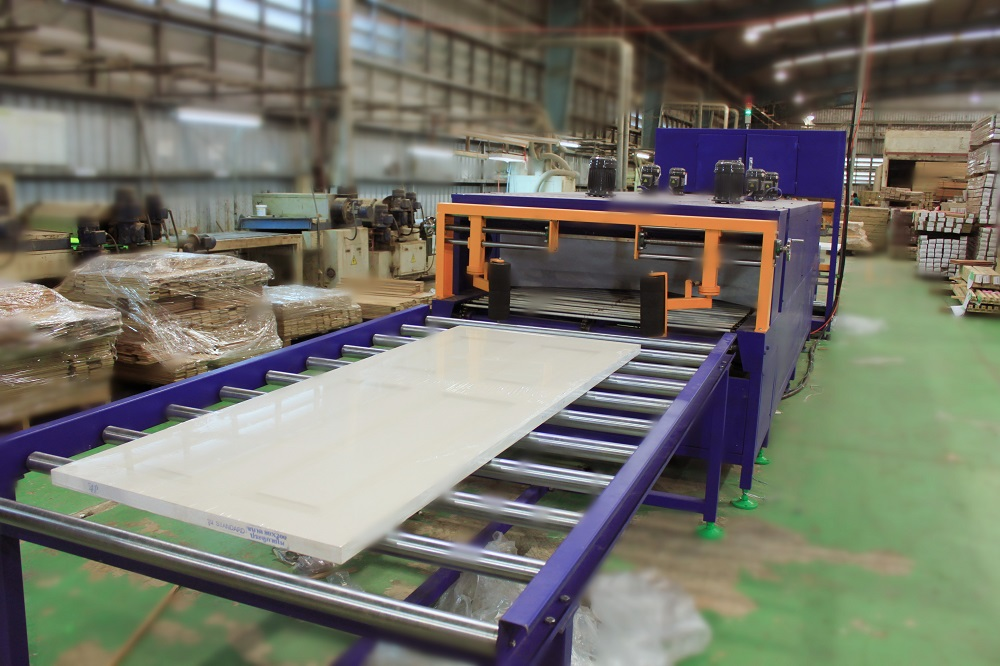
3. Consider Environmental Conditions
The conditions your doors will face during storage and transport should also guide your packing strategy. Humidity, temperature fluctuations, and exposure to debris can affect both the packing materials and the doors themselves.
- Humidity and Moisture: For wooden doors, moisture can lead to warping or mold. Using shrink film with moisture-resistant properties can mitigate these risks.
- Temperature Extremes: In colder environments, ensure that the wrapping or shrinking materials won’t crack or become brittle. For doors stored outdoors, UV-resistant materials can provide added protection.
By adjusting the packaging materials and techniques to suit environmental challenges, you ensure that the doors are preserved in optimal condition, no matter the external factors.
4. Optimize for Transportation
Transportation is often the most vulnerable stage for your packed doors, as they are subject to movement, shocks, and stacking during transit. Here are some ways to optimize packing for transport:
- Door Packing Machines: Investing in a door packing machine will streamline the packing process by automating the wrapping or shrinking process. This ensures consistency in how each door is packed, reducing the chances of human error.
- Securing Loads: When using wrapping solutions, ensure that the doors are tightly wrapped to avoid shifting during transit. If doors are transported on pallets, make sure the loads are locked and secured to the pallet base to prevent damage from sudden movements.
- Cushioning and Impact Protection: Use corner guards and bubble wrap around vulnerable edges to absorb any shocks that occur during handling or transport.
These steps will significantly reduce the risk of product damage during transit, ensuring that the doors reach their destination safely.

5. Evaluate Cost-Effectiveness
While protecting the product is critical, it’s equally important to manage costs effectively. An efficient door packing strategy balances protection with the overall cost of materials and labor.
- Material Efficiency: Choose high-quality wrapping or shrinking films that provide long-lasting protection, but avoid overusing materials. Automated door packing machines can be programmed to use the exact amount of material needed for each door, minimizing waste.
- Reusable Materials: In some cases, using reusable materials like high-quality fabric covers can reduce long-term costs, especially for repeated deliveries within the same supply chain.
- Labor Costs: Automating the packing process using a door packing machine can drastically reduce labor costs and speed up production times. This not only increases efficiency but also reduces the likelihood of packing errors.
By balancing protection and efficiency, you can optimize your strategy for cost-effectiveness, ensuring that your doors are well-packed without inflating costs.
Conclusion
A successful door packing strategy requires careful consideration of the product’s specific needs, the right choice of materials, attention to environmental conditions, optimization for transport, and a cost-effective approach. Incorporating automated solutions like door packing machines and using shrinking and wrapping solutions can streamline your process, ensuring that each door is securely packed and protected. By following these five key elements, your packaging strategy will not only enhance the quality of your products but also improve operational efficiency.

